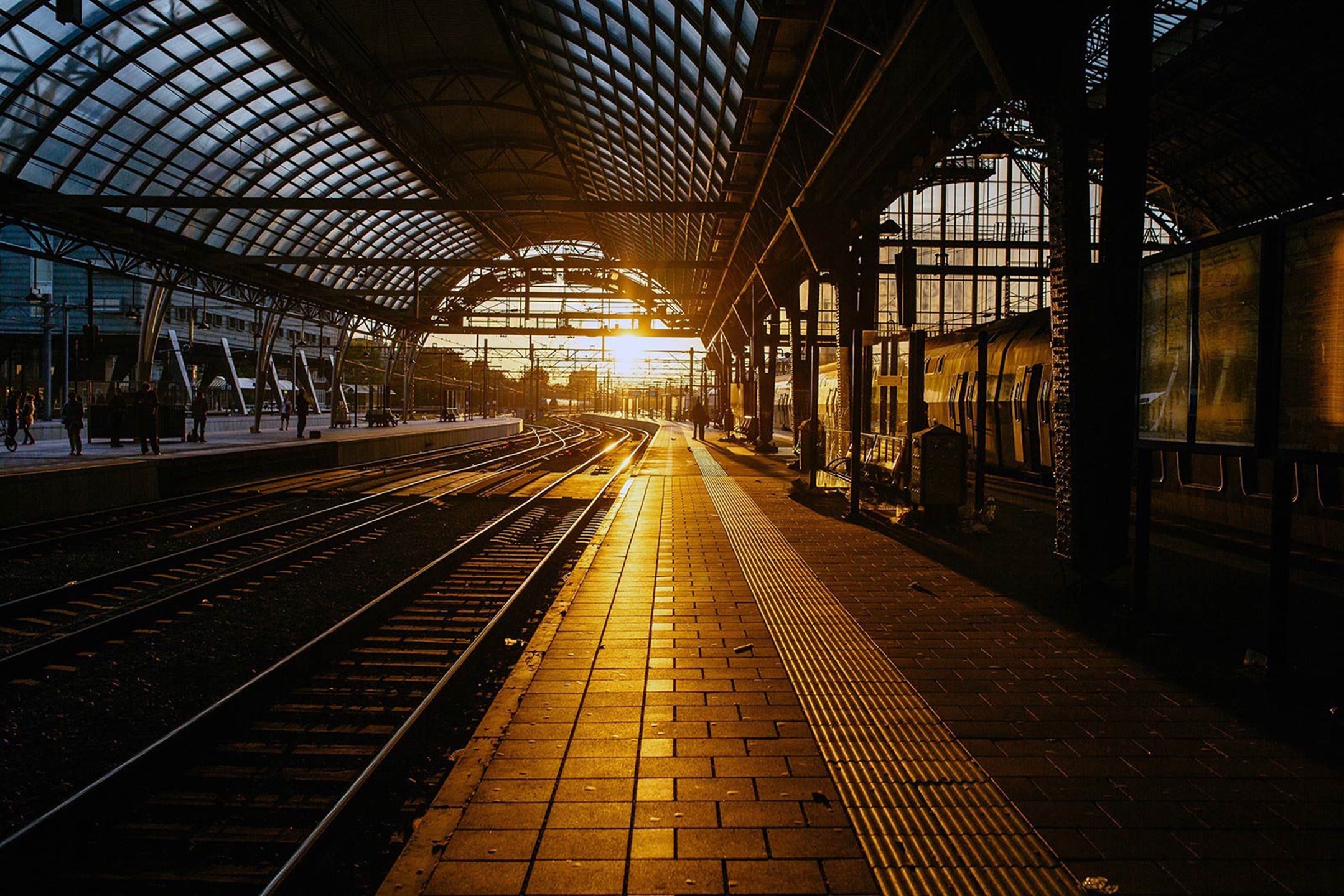Bremen is in the north-west of Germany, forming a triangle with Hamburg to the north-east and Hanover to the south-east. Visitors taking a train to Bremen should look out for its most famous landmarks, including the magnificent Weser Renaissance town hall and the grand old statue of Roland on the historical market square. With good links to the rest of the country, tourists can easily travel by train to Bremen. For example, the journey to Bremen from Hamburg is 55 minutes, or from Hanover it is 1h 31 mins on the Inter-City Express service. The Deutsche Bahn network serving the city includes Inter-City trains and the Inter-City Express service.
Visiting Bremen
From the main railway station, Bremen Hauptbahnhof, visitors alighting from their train to Bremen can walk to the city hall in a mere 11 minutes. Once there, tourists should make sure to take some time out to admire one of the most important examples of Brick Gothic architecture in Europe. It stands in the old Marktplatz (Market Square), which is the historic centre of the city. Here, visitors will also have the chance to admire the statue of Roland, who was the paladin of the first Holy Roman Emperor, Charlemagne. Legend has it that Bremen will remain free and independent as long as this statue continues to watch over the city. Both the statue and city hall have UNESCO World Heritage status. Next to the city hall, the twin spires of Bremen cathedral, St. Petri Dom zu Bremen, tower over the square. On a sunny day, residents and visitors alike can sit at an outdoor café here enjoying the sunshine and watching the world go by.
For some further refreshment, plenty of little restaurants, bistros and Bierkellers can be found around the market square in Schnoorviertel — a district where makers of ropes and textiles once plied their trade in the narrow cobbled streets. Visitors should be encouraged to sample a delicious speciality of the region, Brown Kale with Pinkel Sausage, followed preferably by hot chocolate, wine, or perhaps Weißbier (‘white beer’, also known as wheat beer). The interesting flavours of Witbier, for example, arise from the Belgian tradition of using flavourings such as orange peel or coriander in the brewing process.
Why should you add Bremen to your bucket list?
You might remember Bremen from the fairytale by the Brothers Grimm. An ageing donkey, dog, cat and rooster, thrown on the scrapheap by their masters, decide to run away to Bremen to make their living as musicians. They never made it, of course, but that hasn't stopped the city from adopting the four adventurers as Bremen's mascot. You'll find them everywhere, most notably as the subject of a sculpture that sits next to the ancient Rathaus in the Old Town. It's said that if you hold both of the donkey's legs, it will bring good luck, and you'll see how worn they are that many people have been there before you.
The Rathaus occupies pride of place in a square crammed full of historic treasures. Opposite is the Schütting, a beautiful guildhall which sadly isn't open to the public. It was designed and built back in 1538 and when you see it, you'll think it wouldn't look out of place in the Netherlands. Designed by Flemish architect Johann den Buschener, you'd be right. Take a seat in the morning sunshine at one of the pavement cafes and you can admire both, together with the statue of Roland, a knight symbolising freedom until your coffee goes cold. Bremen even has a specific word for the act of going for a coffee, Kaffeesieren, so it is an essential stop on your itinerary.
Around the corner from the square, you'll find a tiny street with a big attitude. Böttcherstraße, famous for its unusual architecture and a shed-load of artwork, is a tourist attraction in itself. At the House of the Glockenspiel, the bells up on the roof go crazy at 12, 3 and 6 pm playing tunes that last for a full ten minutes after the hour has been struck. Hidden in a little courtyard, you'll find another sculpture of those wandering critters, this time adorning a water feature outside a candy store.
The street has ancient beginnings as the site was once occupied by the coopers that give the street its name. But Böttcherstraße in its present form actually dates only from the 1920s when a local coffee merchant by the name of Ludwig Roselius began buying up the houses in what was a pretty rundown street. With the aid of architects Eduard Scotland and Alfred Runge, he transformed the tiny lane into a much-loved arcade of Art Deco and brick shops and museums that is now one of the city's most attractive destinations.
There's more to see then the Old Town, however, and you shouldn't miss the Schnoor quarter with its narrow lanes and restored houses. There are beautiful parks where you'll find windmills and waterways, reminiscent of Holland. The markets are thriving, tempting you with fresh vegetables, pungent cheeses and a wide selection of cooked meats. And even in the most modern of shopping streets, Sogestraße, there are reminders of the past. Once frequented by pigs, which were used to keep the area's rubbish down, you'll see a sculpture of a little group of pigs at the end of the street today.
What you need to know
Bremen is only around an hour from Hamburg via the high-speed InterCity trains. The city's Old Town is a pleasant ten-minute stroll from the Hauptbahnhof across the water of the Wallanlagen.

